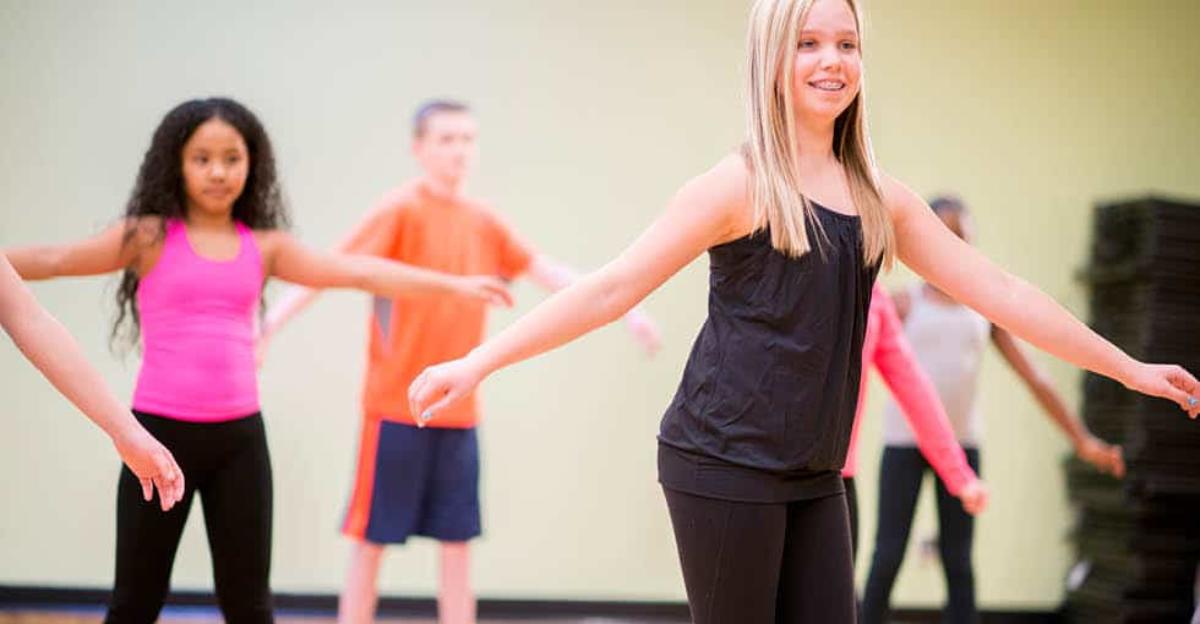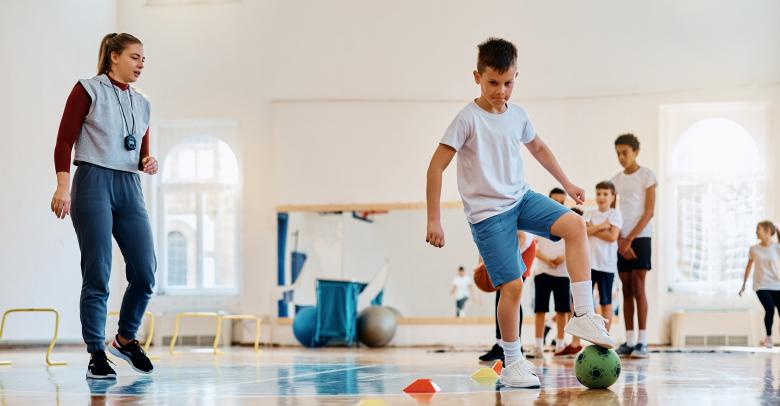Just as with most sports, dance has many benefits beyond the physical. It has been shown to improve a child’s social and emotional skills, with teachers reporting that dance made their students more accepting of one another and respectful of their body and that of others. Dance is also a good means of fitness for children who may shy away from team sports, where coaches and competition can be a bit much to handle for younger students.
With these benefits in mind, dance could be the perfect activity to incorporate into your next lesson plan.
Selecting the Style
From conga lines to square dancing to Irish jigs, there are so many types of dance you can use to inspire your lesson plan. The dance that works best for you will consider a number of factors, including the size of activity space and the age of your students.
For kindergarten to grade two, the best style of dance is one composed of simple movements. The teacher makes a series of individual body movements, such as touching his nose, then swaying his hips, then jumping in the air. Children are asked to mimic those movements while maintaining their personal space, an excellent way to teach simple choreography, coordination, and balance. Most movement is on the spot, so modeling can be done in a regular classroom or gym.
For primary school children, dances such as tap and jazz will build the strength and flexibility of students’ legs and feet, as well as introduce them to different types of music. Once students get older and are able to better memorize routines, ballroom, Latin, and faster jigs are ways to challenge students. These dances will require a larger activity space, such as a gymnasium.
Whatever the age of your students, make sure all lessons include a proper warmup and cool down!
Consider the Learning Objectives
It could be that you want to incorporate dance into your lesson plan because of its myriad of health and wellness benefits. While this may be true, have you considered the other learning objectives dance can help achieve?
Increased Coordination and Rhythm
Partner dances that incorporate extra movement are effective in increasing coordination and rhythm. For early primary students, dances like the Hawaiian Roller Coaster Ride involve movements performed by individual children and performed with one another. Once the music is played, children are asked to time their claps and knuckle taps to the music, which will teach them to listen to the natural rhythm of a song.
Encouraging Creativity
Dance is an artistic expression of creativity. This is the case with any form of dance, but free-form interpretive is the best style to get students to move as they feel. While there are definitely nuances to contemporary interpretive dance, younger students can participate in this type of dance by simply moving along to a piece of music. Try an interpretive “free dance” session at the end of your class — let kids do what they want, and be amazed by the results!
Cultural Education
Almost every style of dance has its underpinnings in some historical and cultural context. For middle school and high school students, dance is an excellent way to complement history lessons, giving teens a less conventional look at the social and cultural side of a certain period.






Leave a Reply